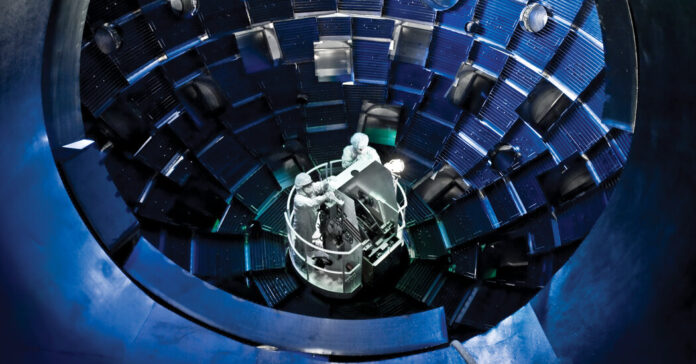The Key Number: 3.88 megajoules.
The experiment in December generated a whirlwind of accolades when it produced about three megajoules of energy — equivalent to about 1.5 pounds of TNT, or about 1.5 times the energy of the incoming lasers. It was the first time that a fusion reaction in a laboratory setting produced more energy than it took to start the reaction.
The July experiment was essentially identical to the December one. “We expected a similar yield,” Dr. Town said. “On the order of three megajoules.”
The actual output was 3.88 megajoules.
The better-than-predicted result indicates that with a few tweaks, laser fusion can become markedly more efficient. But minuscule variations could yield fusion duds as well.
A fusion experiment in June, just a month earlier, was also predicted to produce about three megajoules, but it generated only between 1.6 and 1.7 megajoules, Dr. Town said.
A more recent attempt this month, as part of efforts to maintain nuclear weapons without underground nuclear tests, yielded slightly more than two megajoules, breaking even with the laser energy.
“It was a little bit surprising that we did not achieve ignition on all of them,” Dr. Town said.
Why It Matters: Much more to learn.
Analyzing the results, the Livermore scientists now think they better understand what is going on.
For one, the 192 lasers are not perfect. “There are some variations every time you shoot the laser,” Dr. Town said.
Instead of laser energy arriving perfectly balanced to compress the hydrogen fuel capsule, a slight imbalance nudges the capsule off in one direction. Some of the energy is lost, and the inward implosion does not heat the hydrogen as much.
There are also slight variations in the fuel capsules that affect the fusion reactions. Computer simulations now indicate there can be a wide range in the output energy.
“It could fall as low as 1.4 megajoules,” Dr. Town said. “And if the stars align and everything works perfectly, it could get up to seven megajoules.”
What Happens Next: Upgrading and optimizing the experiment.
Siegfried Glenzer, a scientist at the SLAC National Accelerator Laboratory in Menlo Park, Calif., who led the initial fusion experiments at the Livermore facility years ago, said of the July advance, “The fact that the gain has gone up on the last shot is encouraging news and shows that the current implosions are not yet fully optimized.”
A new series of experiments is about to begin at the National Ignition Facility as it aims to generate higher fusion yields more consistently. The energy of the facility’s lasers is being upgraded to 2.2 megajoules from 2.05. The latest advances occurred after the last upgrade from 1.9 megajoules. Additional energy is expected to lead to further improvements.
“If you can couple effectively more energy to the hot spot, you should get more yield,” Dr. Town said. “You can do that by having a bigger hammer.”



